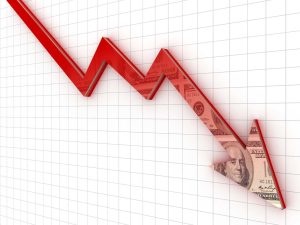The
stock market
is soaring again, and that can only mean one thing—it’s bear season.
What kind of bear, though, can make all the difference. In the wild, the expert advice for what to do when encountering one depends on the species, given their different temperaments: Black, fight back. Brown, lay down. When it comes to stock markets, at least one strategist thinks investors should hit the decks—a grizzly could be on the prowl.
That’s counterintuitive. After a difficult few months Halloween turned sweet rather than scary, and with the
S&P 500
up more than 7% in the first half of November, thoughts of bear markets may have been banished from many investors’ minds. That is particularly true after Tuesday’s consumer price index revealed inflation’s pace continues to slow.
Yet Gavekal Research founder Charles Gave thinks investors shouldn’t let down their guard.
“The U.S. equity market can be measured in simple dollar terms, or in gold terms,” he writes. Given the vagaries of currency markets, many prefer the latter, using the ratio between the S&P 500 and the price of gold, which measures how much gold it would take to buy into the index. The higher the reading, the more valuable stocks are compared with the metal.
In 1971, the start of an inflation-dogged decade, the ratio between the S&P 500 and the price of an ounce of gold (based in 1923) stood at 631, a figure that fell to just 32 at the start of 1980.
Of course, that pattern didn’t hold forever. Overall, the S&P 500 has outperformed the price of gold by about 1.5% per year since 1923, and today’s ratio is 545. Yet Gavekal argues that gold has proven a useful predictor in terms of the big three Ursus magnus events over the past century: The periods spanning 1929-1934, 1970-1980, and 2000-2012.
The best way to know that one is on the way? Checking “whether the ratio between the S&P 500 and gold price is above, or below, its seven-year moving average,” he writes.
Seven years might seem arbitrary, but he notes that it has worked three out of four times over the past century, as it just once offered a false signal during the initial pandemic panic that quickly reversed.
So how does it look today? Gave notes that the ratio is still above the magic seven-year mark, helped further by Tuesday’s rally, but he is still feeling nervous about it.
Going back to 2000, the “ratio of the S&P 500 to the gold price stands at 545; the long-term trend at 507; the moving average at 506. For the last two years, we have been bumping along both the long-term trend and moving average, but not breaking them. Hence, for now, I am not panicking,” he writes.
That said, he thinks investors should still be keeping a nervous eye on that number, and advises a position in gold of 25% or more—the way he’s learned to avoid being a victim of a grizzly.
Gave isn’t the only cautious voice amid the rally. Rosenberg Research founder David Rosenberg notes that one key element was left out of Tuesday’s inflation euphoria. “What the market doesn’t see from the CPI data is this sudden loss in corporate pricing power and a renewed leg of earnings estimates reductions coming our way,” he writes.
In addition, with the S&P 500 still sporting a hefty forward price-to-earnings multiple above 18 times and an equity risk premium—the additional reward for buying into stocks over the guaranteed safety of U.S. government debt—below 100 basis points, which is well below the 300 basis point norm, he argues that high Treasury yields remain a major obstacle for the market to grapple with.
Not everyone is outright bearish. Stifel market strategist Barry Bannister argues that stocks could be rangebound until the spring—or beyond.
Goldman Sachs doesn’t expect much from the stock market either. On Wednesday, David Kostin, Goldman Sachs’ chief U.S. equity strategist, reiterated his 2024 year-end target of 4700 for the S&P 500, which would put it just 4.6% higher than Tuesday’s close. Stocks’ big run this year “will limit the potential appreciation” for the index, as strong economic growth is already baked into equity prices, and multiples are unlikely to expand from current fairly valued levels. he said.
For bulls used to this year’s big gains—the S&P 500 is closing in on 18% for 2023—the question is whether more modest returns will be satisfying.
Still, with plenty of sidelined money ripe to get pulled into a Santa rally, the party could continue, at least for now. Even Rosenberg says “we should all enjoy the stock market rally while it lasts.”
Even if a bear might be lurking just around the corner.
Write to Teresa Rivas at [email protected]
Read the full article here















